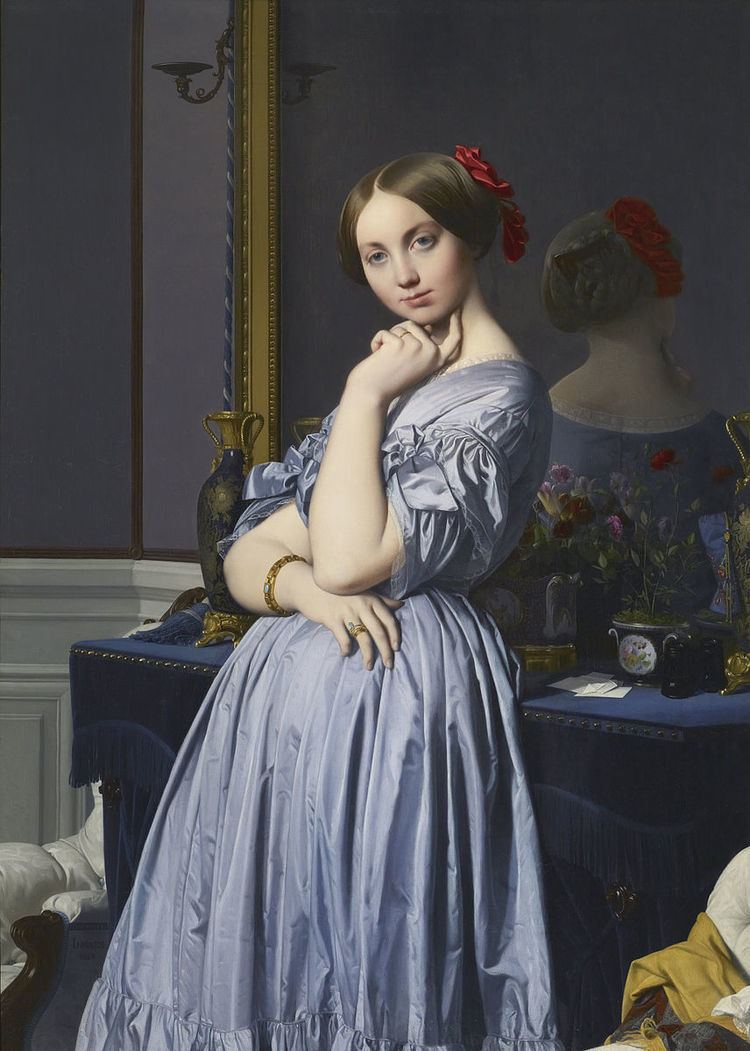 | ||
A dress (also known as a frock or a gown) is a garment consisting of a skirt with an attached bodice (or a matching bodice giving the effect of a one-piece garment). In many cultures, dresses are more often worn by women and girls.
Contents
The hemlines of dresses vary depending on the whims of fashion and the modesty or personal taste of the wearer.
History
Before the Victorian period, the word "dress" usually referred to a general overall mode of attire for either men or women, as reflected today in such phrases "evening dress", "morning dress", "travelling dress", "full dress", and so on, rather than to any specific garment. At that time, the most-often used English word for a woman's skirted garment was gown. By the early 20th century, both "gown" and "frock" were essentially synonymous with "dress", although gown was more often used for a formal, heavy or full-length garment, and frock or dress for a lightweight, shorter, or informal one. Only in the last few decades has "gown" lost its general meaning of a woman's garment in the United States in favor of "dress".
In the ancient world, for example Ancient Greece and Rome, both men and women wore a similar dress-like garment termed generically a tunic. From this developed the dress worn by women and male clothing such as cassocks and Fustanella worn by priests and soldiers respectively. An ancient Greek tunic, appearing on the Charioteer of Delphi inspired an early twentieth gown designer, Mariano Fortuny to create the Delphos gown in 1907.
19th century
Dresses increased dramatically to the hoopskirt and crinoline-supported styles of the 1860s, then fullness was draped and drawn to the back. Dresses had a "day" bodice with a high neckline and long sleeves, and an "evening" bodice with a low neckline (decollete) and very short sleeves.
Throughout this period, the length of fashionable dresses varied only slightly, between ankle-length and floor-sweeping.
20th and 21st centuries
Beginning around 1915, hemlines for daytime dresses left the floor for good. For the next fifty years fashionable dresses became short (1920s), then long (1930s), then shorter (the War Years with their restrictions on fabric), then long (the "New Look").
Since the 1970s, no one dress type or length has dominated fashion for long, with short and ankle-length styles often appearing side-by-side in fashion magazines and catalogs.
Usage
In most varieties of formal dress codes in Western cultures, a dress of an appropriate style is mandatory for women. They are also very popular for special occasions such as proms or weddings. For such occasions they, together with blouse and skirt, remain the de facto standard attire for many girls and women.
